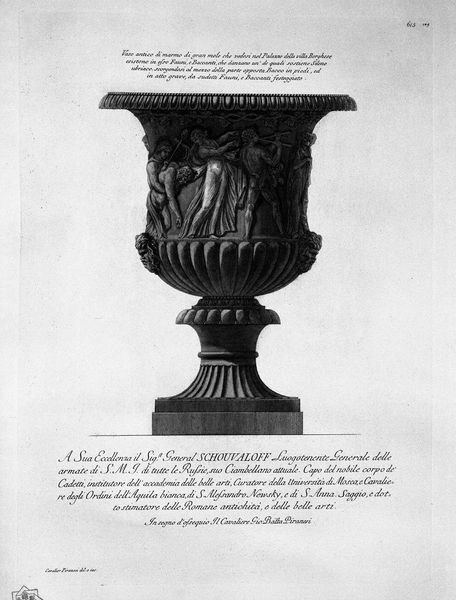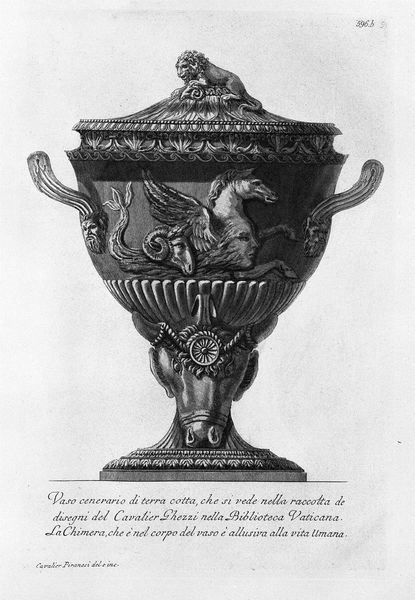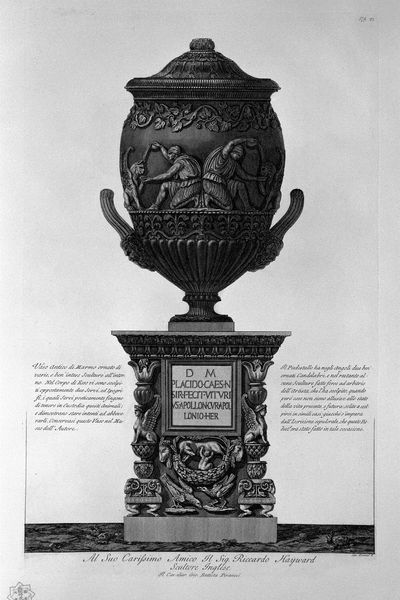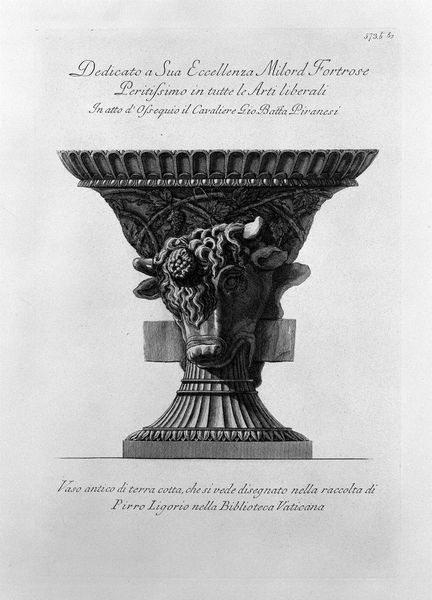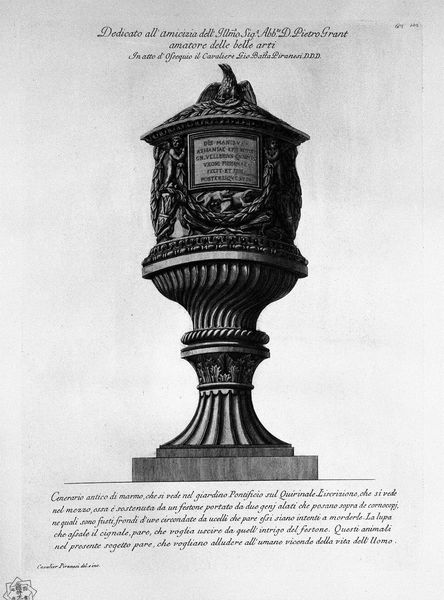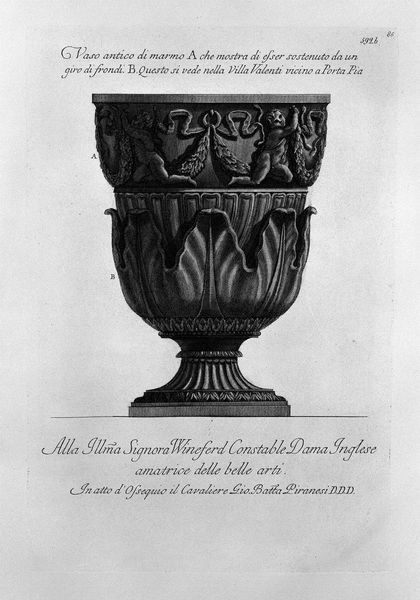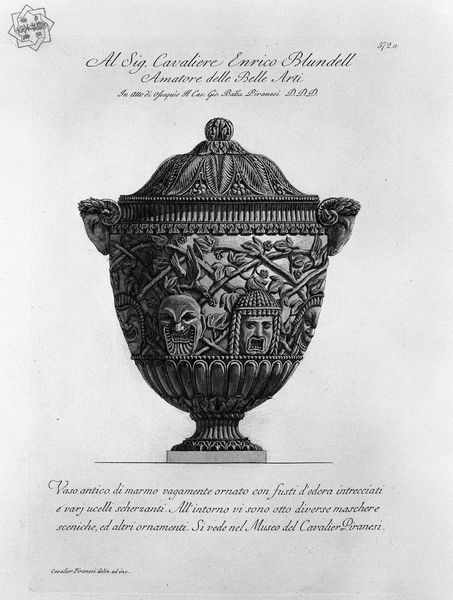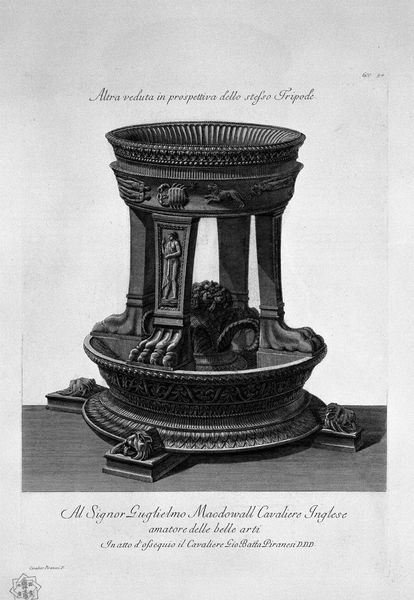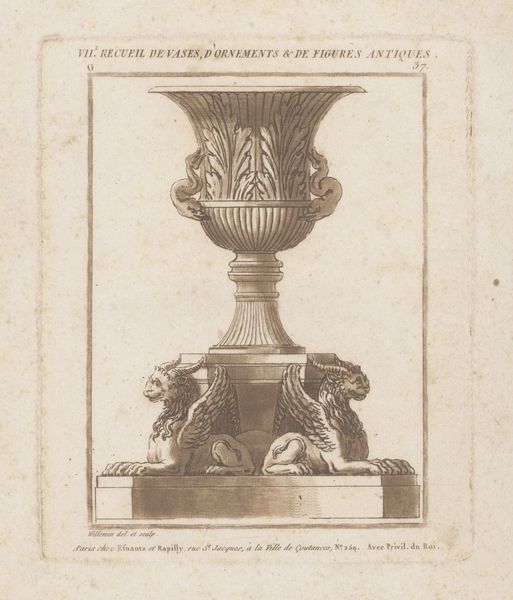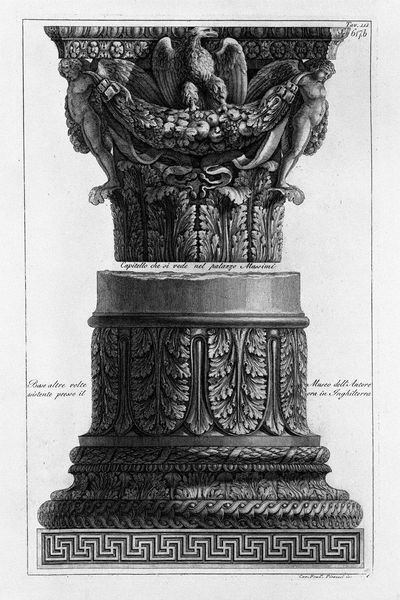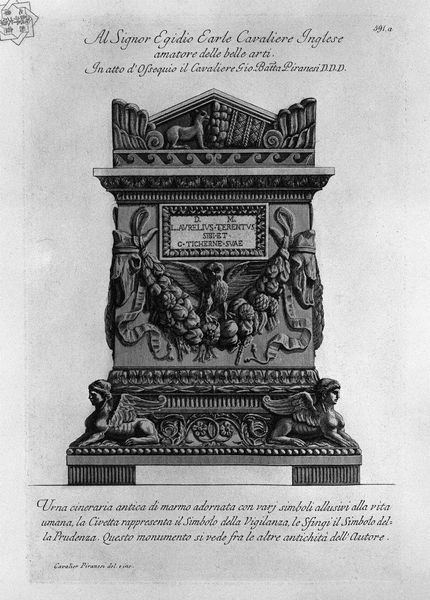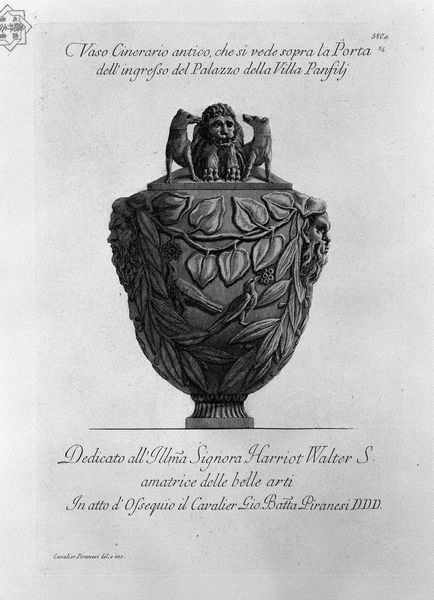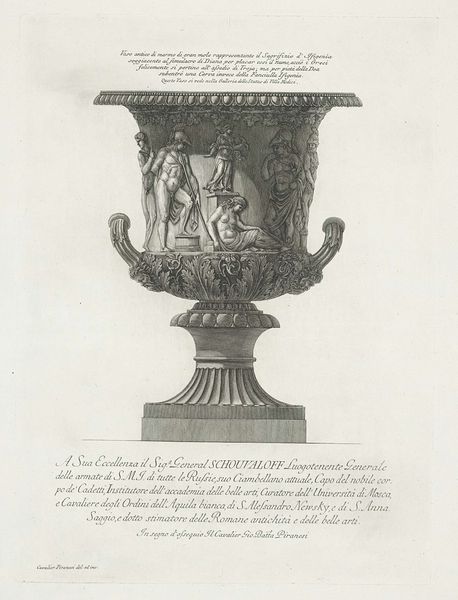
metal, engraving
#
baroque
#
metal
#
greek-and-roman-art
#
old engraving style
#
classical-realism
#
form
#
geometric
#
line
#
engraving
Copyright: Public domain
Curator: This engraving, "Antique vase of marble (Villa Albani)," is by Giovanni Battista Piranesi. Look at how he renders the textures, mimicking metal. Editor: Stark, almost severe in its clarity. The high contrast makes the vase appear quite monumental, doesn't it? It commands attention, doesn’t invite it. Curator: Piranesi, an engraver but also an architect, highlights classical form with incredible precision. This particular vase, the inscription suggests, was likely made for or found its way into Cardinal Alessandro Albani's villa. Editor: Precisely. I'm immediately drawn to the base. The stylized sphinxes lend such weight, not only visually but also conceptually, grounding the vessel. But I’m interested in the means of its circulation – prints like these democratized access to aristocratic taste. Curator: Note how Piranesi employed line and hatching to suggest three-dimensionality. He doesn't simply record; he interprets, idealizes. Editor: And who would have commissioned it, purchased it, and displayed it? That's what truly informs our appreciation of classical objects today; their commodification, in a sense. Piranesi created for the market, responding to—and shaping—desire for the antique. The craft of reproduction in itself becomes interesting in understanding the reception of classical works. Curator: It brings us back to Rome's revival of classical themes. Its visual language—proportion, symmetry, the carefully delineated details like the acanthus leaves—evokes authority. Editor: So, a beautifully constructed object becomes more, reflecting political economies of taste and the status it projected. A copy carries its own social weight. Curator: Absolutely, something to remember and ponder.
Comments
No comments
Be the first to comment and join the conversation on the ultimate creative platform.
